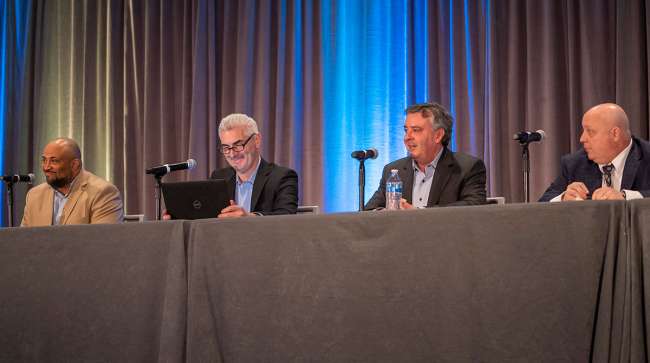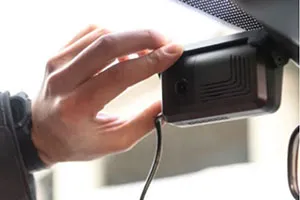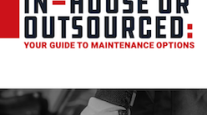Senior Reporter
Fleet Executives Split on Inward-Facing Cameras

[Stay on top of transportation news: Get TTNews in your inbox.]
MINNEAPOLIS — The benefits of inward-facing cameras on trucks have turned out mostly to be a plus, but getting buy-in from drivers hasn’t exactly been a cakewalk, according to a panel of safety executives.
While an expert panel speaking about safety technology lessons learned at a recent conference varied, it was the focus on in-cab cameras — outward and inward facing — that dominated the discussion.
The cameras helped improve driver behavior and accident analysis, the executives said.
Two of the three trucking safety executives braved the initial driver discontent for inward-facing cameras, while one decided to drop them from the company’s repertoire of safety technologies.

Samsara
The three executives spoke at an April 5 session of American Trucking Associations’ 2023 Safety, Security, Human Resources National Conference & Exhibition.
“Inward and outward cameras are probably the best things that we’ve implemented, along with the collision mitigation systems and simulators that we use for our training and evaluation of new drivers,” said panelist Benton Elliott, vice president of safety and training at Big M Transportation in Blue Mountain, Miss.
“We opted to use the inward-facing cameras,” said Darick Underwood, director of safety at Carter Express in Anderson, Ind. “It wasn’t necessarily the most popular thing among the fleet, so we had to obviously sell it to the drivers.”
Said Jeff Reeves, general manager at Fortune Transportation in Windom, Minn.: “We really value our drivers’ opinions, so we want to make sure that the technology in the [cab] is not disruptive.”
Several years ago Fortune took a poll after installing inward-facing cameras.
“We decided to remove the inward-facing cameras,” Reeves said, calling it a “real positive move.”
But Reeves said his company then installed outward side cameras. He said he still has information and control of what’s happening in the cab, including audio.

Kayne Grau, CEO of Uptake, discusses ways that fleets can use data to prevent expensive truck repairs. Hear the program above and at RoadSigns.TTNews.com.
“The accident mitigation technology we have had has grown in the past five years or so,” Reeves said. “We analyze each accident. We analyze at the end of the year and try to put together a game plan to improve our performance, and over the past five years it’s been tremendous.”
Underwood said that his company executives noticed that the cameras captured a lot of behavior that drivers exhibited throughout the years, and they didn’t even realize the behavior until it was brought to their attention.
“When we presented this to them they were actually pleased that we added this to their trucks. These were behaviors that could have been very detrimental to themselves and to the motoring public,” Underwood said.
Want more news? Listen to today's daily briefing above or go here for more info
Elliott said his company wanted to get 100% of the safety picture.
“Obviously, we had some drivers who were not happy with the cameras,” he said. “Over time, it’s gotten better. We don’t hear as much about it. It’s been a really good success for us. It’s such a great tool because you can see what’s going on.”
Underwood said if he could go back and do it over, he might not have initially installed the inward-facing cameras.
“I might have used it as a carrot that the driver could have earned by behavior issues like their CSA scores, frequency of accidents, things of that nature to put the ball in the driver’s court, to say ‘You’ve earned this inward-facing camera.’ ”




